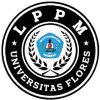PENGARUH MODEL E-JIGSAW LEARNING UNTUK MENINGKATKAN KEMAMPUAN KOLABORASI MAHASISWA
DOI:
https://doi.org/10.37478/jpm.v4i3.2799Abstract
The purpose of this study was to investigate the effectiveness of the e-jigsaw learning model to improve student collaboration skills. This research is an educational development research which is adapted from the development model according to Borg & Gall. The instrument used in this research is a collaboration skills questionnaire. The skills assessment was carried out for first semester students where two classes came from a state university and one class came from a private university. The results of the development are e-jigsaw learning learning model products. From the results of the research and development stages that have been carried out, it can be concluded that the e-jigsaw learning model is effective for improving collaboration skills.
Downloads
Keywords:
jigsaw, online learning, collaborationReferences
Brownell, M. T., Yeager, E., Rennells, M. S., & Riley, T. (1997). Teachers Working Together: What Teacher Educators and Researchers Should Know. Teacher Education and Special Education: The Journal of the Teacher Education Division of the Council for Exceptional Children, 20(4), 340–359. https://doi.org/10.1177/088840649702000405
Chugh, R., & Ruhi, U. (2018). Social media in higher education: A literature review of Facebook. Education and Information Technologies, 23(2), 605–616. https://doi.org/10.1007/s10639-017-9621-2
Doymus, K., Karacop, A., & Simsek, U. (2010). Effects of jigsaw and animation techniques on students’ understanding of concepts and subjects in electrochemistry. Educational Technology Research and Development, 58(6), 671–691. https://doi.org/10.1007/s11423-010-9157-2
Fauziah, W. Y. W., & Alhaji, I. A. (2012). Insight of Corporate Governance Theories. Journal of Business & Management, 1(1), 52–63. http://www.todayscience.org/jbm
Hebebci, M. T., Bertiz, Y., & Alan, S. (2020). Investigation of Views of Students and Teachers on Distance Education Practices during the Coronavirus (COVID-19) Pandemic. International Journal of Technology in Education and Science, 4(4), 267–282. https://doi.org/10.46328/ijtes.v4i4.113
Hull, G., Zacher, J., & Hibbert, L. (2009). Youth, risk, and equity in a global world. Review of Research in Education, 33(1), 117–159. https://doi.org/10.3102/0091732X08327746
Jamal, A., & Khedhaouria, A. (2015). Knowledge Sourcing, Reuse and Creation in Innovation Project Teams. Journal of Knowledge Management, 19(5), 1–21. https://dx.doi.org/10.1108/JKM-01-2015-0039
Johnson, D. W., & Johnson, R. T. (2014). Cooperative Learning in 21st Century. [Aprendizaje cooperativo en el siglo XXI]. Anales de Psicología, 30(3), 841–851. https://doi.org/10.6018/analesps.30.3.201241
Ku, K. Y. L., Lee, V. S. L., & Ellis, J. W. (2017). Using artwork as problem context in generic critical thinking instruction: A strategy for thoughts. Thinking Skills and Creativity, 25, 53–59. https://doi.org/10.1016/j.tsc.2017.07.001
Lasmawan, I. W., & Budiarta, I. W. (2020). Vygotsky’s Zone Of Proximal Development and The Students’ Progress in Learning (A Heutagogcal Bibliographical Review). JPI (Jurnal Pendidikan Indonesia), 9(4), 545. https://doi.org/10.23887/jpi-undiksha.v9i4.29915
NEA (National Education Association). (2011). Preparing 21st Century Students for a Global Society: An Educator’s Guide to the “Four Cs. Retrivied from https://nea.org/assets/docs/A-Guide-to-Four-Cs.pdf
Nevgl, A., Virtanen, P., & Niemi, H. (2006). Supporting students to develop collaborative learning skills in technology-based environments. British Journal of Educational Technology, 37(6), 937–947. https://doi.org/10.1111/j.1467-8535.2006.00671.x
Nissim, Y., Weissblueth, E., Scott-Webber, L., & Amar, S. (2016). The Effect of a Stimulating Learning Environment on Pre-Service Teachers’ Motivation and 21st Century Skills. Journal of Education and Learning, 5(3), 29. https://doi.org/10.5539/jel.v5n3p29
Osborne, J. (2013). The 21st century challenge for science education: Assessing scientific reasoning. Thinking Skills and Creativity, 10, 265–279. https://doi.org/10.1016/j.tsc.2013.07.006
Pellegrino, J. W. (2014). Assessment as a positive influence on 21st century teaching and learning: A systems approach to progress. Psicologia Educativa, 20(2), 65–77. https://doi.org/10.1016/j.pse.2014.11.002
Roschelle, J., & Teasley, S. D. (1995). The Construction of Shared Knowledge in Collaborative Problem Solving. Computer Supported Collaborative Learning, 69–97. https://doi.org/10.1007/978-3-642-85098-1_5
Sadiku, L. M. (2015). The Importance of Four Skills Reading, Speaking, Writing, Listening in a Lesson Hour. European Journal of Language and Literature, 1(1), 29. https://doi.org/10.26417/ejls.v1i1.p29-31
Suwantarathip, O., & Wichadee, S. (2014). The effects of collaborative writing activity using Google docs on students’ writing abilities. Turkish Online Journal of Educational Technology, 13(2), 148–156. http://files.eric.ed.gov/fulltext/EJ1022935.pdf
Valente, L. (2018). CO-LAB Guidelines for Assessing Collaborative Learning in the Classroom. 1–20. http://www.eun.org
Zivkovil, S. (2016). A Model of Critical Thinking as an Important Attribute for Success in the 21st Century. Procedia-Social and Behavioral Sciences, 232(April), 102–108. https://doi.org/10.1016/j.sbspro.2016.10.034
Downloads
Published
How to Cite
Issue
Section
License
Copyright (c) 2023 Laifa Rahmawati, Jumadi Jumadi, Jaslin Ikhsan

This work is licensed under a Creative Commons Attribution-ShareAlike 4.0 International License.













